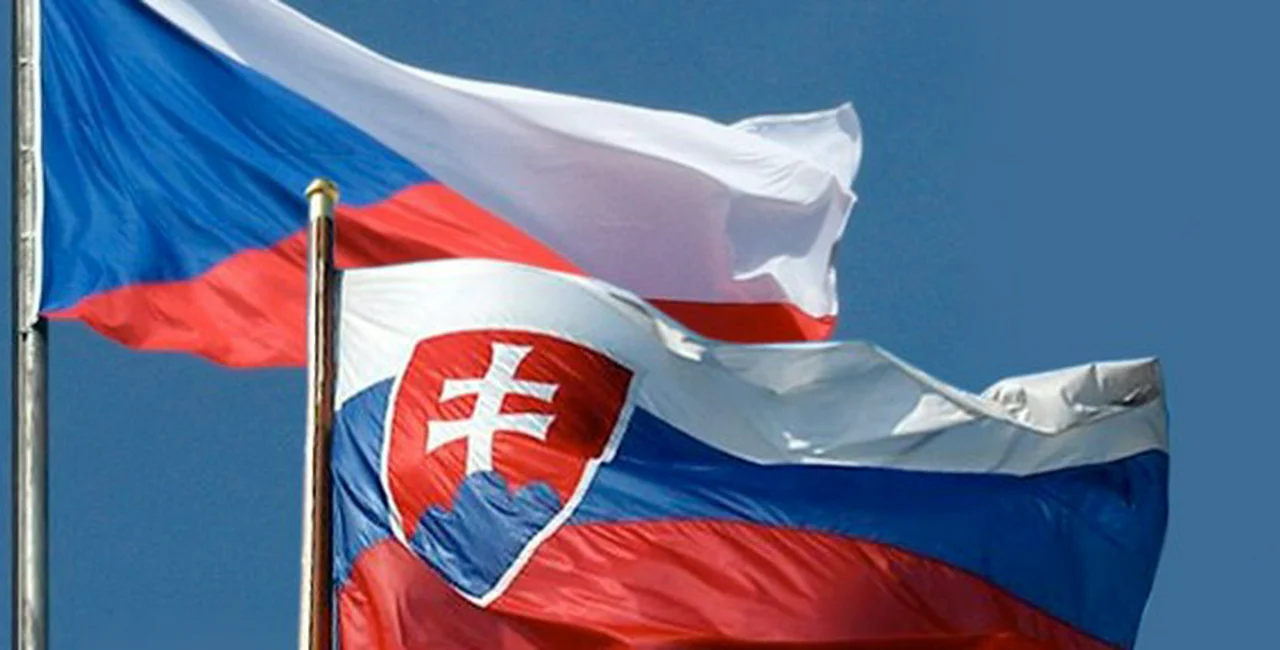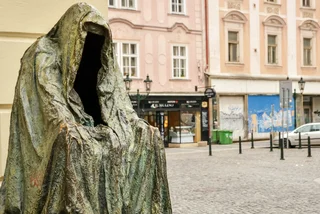Czechoslovakia, formed in 1918, was an independent state born directly after the end of the First World War and the subsequent breakup of the Austro-Hungarian Empire on October 31, 1918. It was a state which included territories of what is now the Czech Republic, Slovakia and the Ukraine. The population of Czechoslovakia in 1921 was 13.6 million, out of which Czechoslovaks (Czechs and Slovaks) accounted for 64%, Germans for 23%, Hungarians for 5.5%, and so on. It was a country composed of people of many nationalities, enjoyed many spoken languages, and could be considered multi-ethnic by all means. To understand the complexities of the eventual split, it is important to understand the historical developments that took place.
With the Second World War and the conflicts and divisions that it caused, Czechoslovakia was first deprived of its German-speaking regions in 1938. Following this, in 1939, Czechoslovakia was invaded by Nazi Germany and ceased to exist. The Slovak State was formed, Subcarpathian Ruthenia was annexed by Hungary and Poland occupied the Zaolzie region. The Protectorate of Bohemia and Moravia was formed in what remained. The vision of a unified country seemed very distant at the time.
In 1945, after the end of WWII, Czechoslovakia was reinstated, alas with a territory smaller than before the war, i.e. without Subcarpathian Ruthenia, which, following a much disputed referendum, was annexed by the Soviet Union (Ukrainian Soviet Socialist Republic). When the Beneš Decrees were enforced, 2.5 million ethnic Germans were forced to leave the territory. Essentially, what remained was a Czechoslovakia composed predominantly of Czech, Slovak, and Hungarian ethnic groups.
Efforts to return to the democratic form of government which existed prior to WWII were short lived. In 1948, the communists officially came to power and Czechoslovakia fell into their grip, which would not cease to exist until 1989, soon after followed by a break-up.
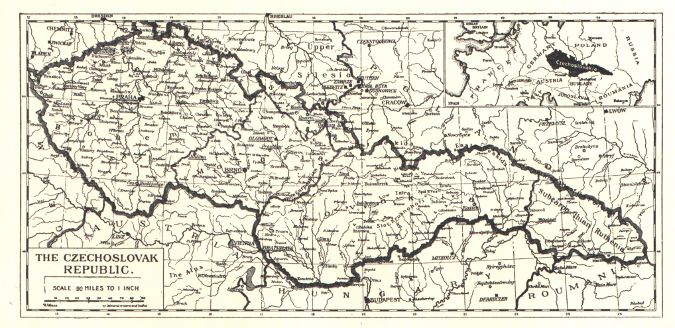
Czechoslovakia of 1918-1938
Czechoslovakism and the birth of Czechoslovakia
Czechoslovakism, rooted in the 1920 constitution and the belief in a common, united country of Czechs and Slovaks, was a movement, often characterized through politicians such as Tomáš Garrigue Masaryk (President osvoboditel – President Liberator), Eduard Beneš (President budovatel – President Builder) and many others in all circles of society. The idea proposed that Czechs and Slovaks belong together on historical grounds, and were artificially divided under the Austro Hungarian Empire. In essence, it surfaced as a protectionist and nationalist measure following assimilation efforts of the German and Hungarian speaking political powers. The movement is closely tied with the establishment of Czechoslovakia in 1918. It called for secularism to unify the more religious Slovaks with the less religious Czechs.
It was, to an extent, a unifying element, and proponents such as Eduard Beneš argued that a united Czechoslovakia would help both the more developed Czechs as well as the more agricultural Slovaks. He also stressed equal access to governmental offices and mutual aid. The most important factor was that it established a legal right to a state by a significant majority, one which would be hard to achieve without the Slovaks (or for the Slovaks without the Czechs). With the large populations of Germans, Hungarians, Poles, Russians and others, it would have been very hard to establish authority and the rule of law without a united Czech-Slovak majority. The formation of Czechoslovakia could be seen as a necessity in the light of the future. Slovakia, for one, was actually under the threat of growing Hungarian influence prior to WWI. Unification allowed for the emancipation of Slovakia from Hungarian elements and allowed for its greater political leverage, including the will of some to create a separate country.
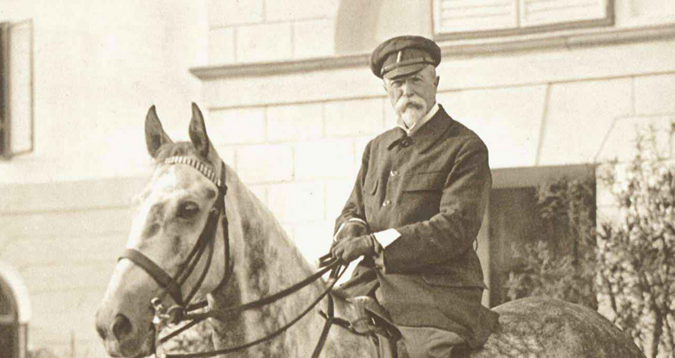
Tomáš Garrigue Masaryk – The first president of Czechoslovakia
Czechoslovak Language
When the 1920 Language Act came into being, it dubbed the “Czechoslovak language” as the norm and the only official language of the newly founded Republic.
„jazyk československý jest státním, oficielním jazykem republiky“
As is stipulated, the languages were actually two, but common for both countries in the sense that both could communicate with each other using their own. Minority languages (German, Polish, Hungarian etc.) spoken by some 20% of the population at the time were granted the freedom of usage.
In time, Czechoslovak TV and Radio was aired in both Czech and Slovak languages. Slovaks would travel to Czech lands, while Czechs would frequent the Slovak Tatra mountain range, one of the most popular mountain destinations in Czechoslovakia. Marriage and language exchange was frequent, and the social link was very strong at the time. Language division was there, but largely neutralized by efforts to use both Slovak and Czech in announcements, in news and so on. Politically, both Czech and Slovak was used to address the masses.
The Slovak State (1939 – 1945)
Considerable criticism is to this day geared against Slovakia from some Czechs, accusing it of collaboration with Nazi Germany. Slovakia separated itself under the leadership of Josef Tiso and established itself as a Slovak State (Slovenský štát) in 1939 and ceased to exist in 1945, just before the end of the war. Many Czechs felt this was betrayal and that this demonstrated that the idea of Czechoslovakia composed of Czechs and Slovaks was not entirely shared by the Slovaks. The Slovaks, however, argue that this was involuntary and did not by far represent the opinions of the majority.
Election of Communists in Czechoslovakia
The democratic president at the time, Eduard Beneš was forced to hand over power on February 25, 1948. Due to post-war chaos, fragmentation of political parties and an overall dissatisfaction with the government meant that in 1946, the Communists did very well in the elections. In Czech lands, 40.17% people voted for the Communist Party of Czechoslovakia, while in Slovak lands, this was only 30.48%. Given the larger population of Czechs, the amount of mandates resulted in the Communists winning the elections in the larger Czechoslovakia. Many Slovaks felt that they did not choose this path and due to the Czechs, were forced to accept it.
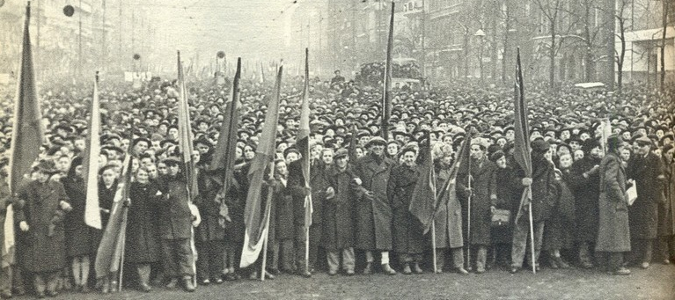
February 25, 1948 – The day the communists took over Czechoslovakia
Political Representation, Self-Determination and Pragocentrism
Many Slovaks felt overpowered and unable to decide their own fate and political leaders following the elections. Elected presidents were Slovak and Czech in nationality, in order to achieve greater equality. Despite this, however, many felt that they were not sufficiently represented. Frustration was largely caused by the fact that some Slovaks saw themselves as part of an entity with a majority Czech population, which, to a significant degree, dictated the direction taking place. Given the strong grip of the Communist regime and its centralized nature situated in Czech lands, many Slovaks felt that even the political representatives were actually answerable to the Czechs and Prague (Pragocentric). Many refer to this as asymmetrical in nature, attributing this suppressed fact to the eventual break-up.
Economic Divide
Major differences existed with regards to the economic development of Slovakia as opposed to Bohemia and Moravia. Slovakia was largely agricultural in nature, while large parts of Czech lands were industrialized and considered the bread basket of the Austro Hungarian Empire. Large sums of funding flowed from the larger entity to Slovakia. Some Czechs saw this as something that was slowing them down and as something that limited their potential. In the 1990s, the Czech Republic’s GDP per capita was, in fact, 20% higher than that of Slovakia. From 1991 onwards, budget transfers to Slovakia ceased, also contributing to mounting political pressure for greater self-determination.
Federalization, Fall of Communism and the Split
The 1969 federalization which resulted in the formation of two federal states, together referred to as ČSSR (Československá socialistická republika), resulted in one of the first tangible efforts to separate the two nations. Borders were drawn and people became citizens of their respective countries. The federal government remained in control of key strategic social and political functions while the national governments were given new privileges and possibilities.
When the communist regime fell in 1989, ČSFR (Česká a Slovenská Federativní Republika) was established, yet again composed of the Czech Republic and the Slovak Republic and governed by the Federal Assembly. With the post-communist federal government in its infancy, and the predominantly political chaos that took place, the calls for two separate countries gained momentum, primarily in political circles. This was in large due to differing agendas, incompatible political developments and the lack of a clear common political direction. The newly-elected president Václav Havel was strongly against any breakup. In fact, the majority of the population at the time was also against such an idea. In a country-wide poll from 1992, only 37% Czechs and 36% of Slovaks favored division and dissolution.
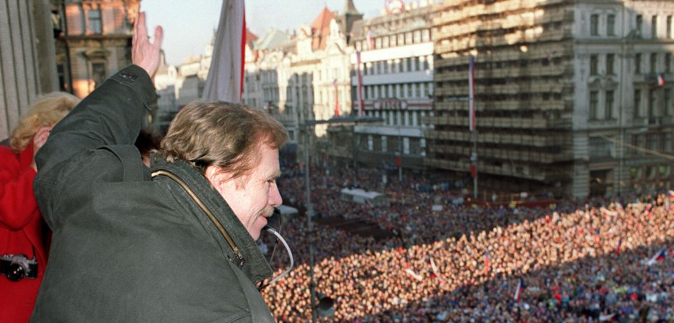
Václav Havel in 1989 – The first post-communist president of ČSFR
Politicians such as Václav Klaus wanted either a tighter federal system or outright dissolution. Mečiar and other Slovak politicians favored a confederate system likened to that of Belgium. After multiple meetings and the failure to arrive at a common solution, Klaus and Mečiar agreed with dissolution. The Slovak Parliament declared independence on July 27, 1992. Soon after, Czech president Václav Havel resigned, seeing the decision as something that should not have happened and not something he was willing to be part of. Act 541 was passed, dividing property in a ratio of 2:1 and Act 542 established a date for the official dissolution at December 31, 1992.
The split was complete, without a referendum, without having asked the people if this was the direction they wanted to take. The lack of a referendum is in retrospective a commonly discussed and disputed point among the general public and many politicians. Perhaps it could be said that the time at which these decisions were made, the simplest solution to growing problems was to divide and to determine each others’ future separately and without any violence. The question is whether the decision was the right one…
The Now and the Future
Czechs and Slovaks did and do share a common bond. The historical partnership and mutual enrichment cannot be disputed. With the dissolution, many felt deprived and many felt that it was not the right direction. However, developments seem to show that relationships between Slovakia and the Czech Republic are in fact better than ever before and at a level that only a few other countries can draw parallels with. Both countries are now in the EU and NATO and both countries are interconnected, be it through recent Czech-Slovak shows on TV, through music, the passion for hockey, or political contacts. Many Czech and Slovaks share family members and many Slovak students study in Prague. Essentially, both countries have moved on and evolved as neighbors and, in a way, like two siblings each paving their own paths, but always in close contact with each other.












 Reading time: 8 minutes
Reading time: 8 minutes 